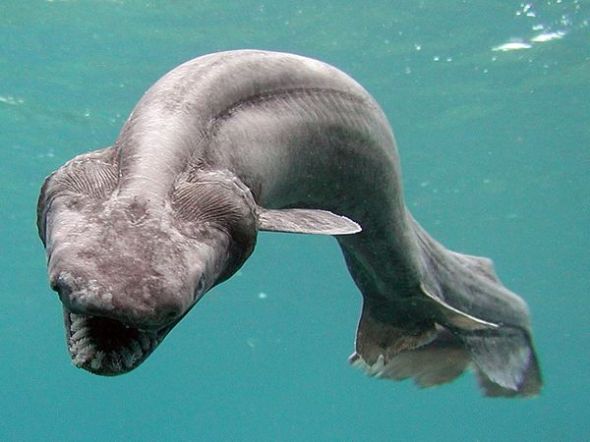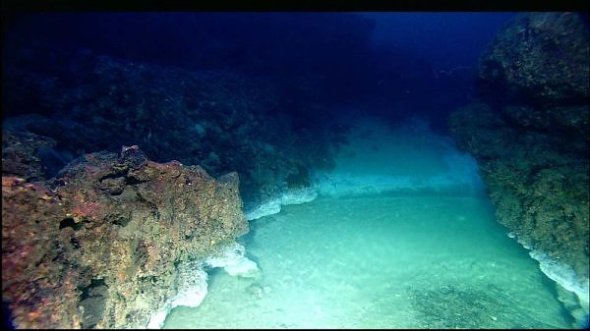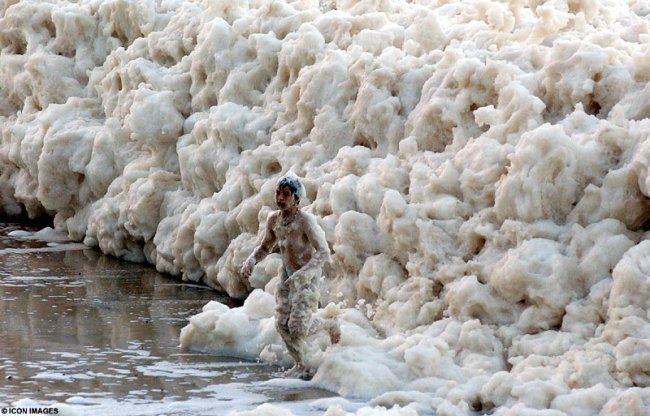The ocean is pretty spectacular. It covers more than 70 percent of the world but humans have only explored around five percent of it. With so much left to learn, it’s not wonder new and strange things are being discovered every day. Below are five of the most astonishing photos and discoveries to surface from the seas in the past 25 years.
1) Rare sighting of a deep-sea frilled shark

Rarely seen by humans, frilled sharks spend most of their lives in the deep sea up to depths of 5,000 feet. Frilled sharks bear many of the same characteristics of prehistoric sharks and rays and are considered living fossils. This picture was taken in 2007 off the coast of Japan when a fishermen discovered a female frilled shark in shallow waters. Suspected to be injured or sick, the shark was brought to Awashima Marine Park, but died soon after. Watch a video of this unusual sighting here.
2) Spiny Throat of a Leatherback Sea Turtle

Though leatherbacks may seem like gentle giants of the sea, for jellies and other soft-bodied creatures, an unlucky encounter looks straight out of a Jaws movie. A leatherback’s esophagus is lined with hundreds of backward-pointing spines that help keep gelatinous prey down. Although leatherbacks are the largest species of sea turtle — weighing up to 2,000 pounds — they feed almost exclusively on open-water jellies and are particularly vulnerable to marine debris such as plastic bags, which, to a turtle, look like its usual snack.
3) Underwater Lake in the Gulf of Mexico

In 1990, on an expedition in the Gulf of Mexico, scientists were amazed when they discovered what appeared to be an underwater lake half a mile below the ocean’s surface. Separated by its salt density, the remarkable waters have their own tides and sandy beaches that are lined by thousands of mussels. The dense pools are too saline for most life beyond small microorganisms, but invertebrates like shrimp and tubeworms inhabit the mussel beds. Since the first discovery, scientists have returned the pools multiple times to test new studies on these underwater anomalies.
4) Sea Foam After a Storm in Yamba

After a storm in 2007, parts of Austalia’s shoreline were dubbed “the cappuccino coast” due to the extreme levels of seafoam that invaded Yamba, a small town just north of Sydney. Reaching as high as nine feet in some areas, the foam disrupted traffic in the small town for days. Though it may look fun to play in, scientists say the bubbles were a mixture of salt, chemicals, dead plants, decomposed fish and excretions from seaweed.
5) Puffer Fish Crop Circles

When a series of beautiful underwater sand circles were discovered off the coast of Japan in 2012, many were quick to impute the designs to aliens. But it turns out the culprits – or artists – were male puffer fish trying to grab the attention of females. Using only their small bodies and fins, puffer fish tirelessly move sand into amazing circular patterns for females to inspect. The process takes about seven to nine days and scientists are still unsure about what exactly the females are looking for in a suitable sculpture.
